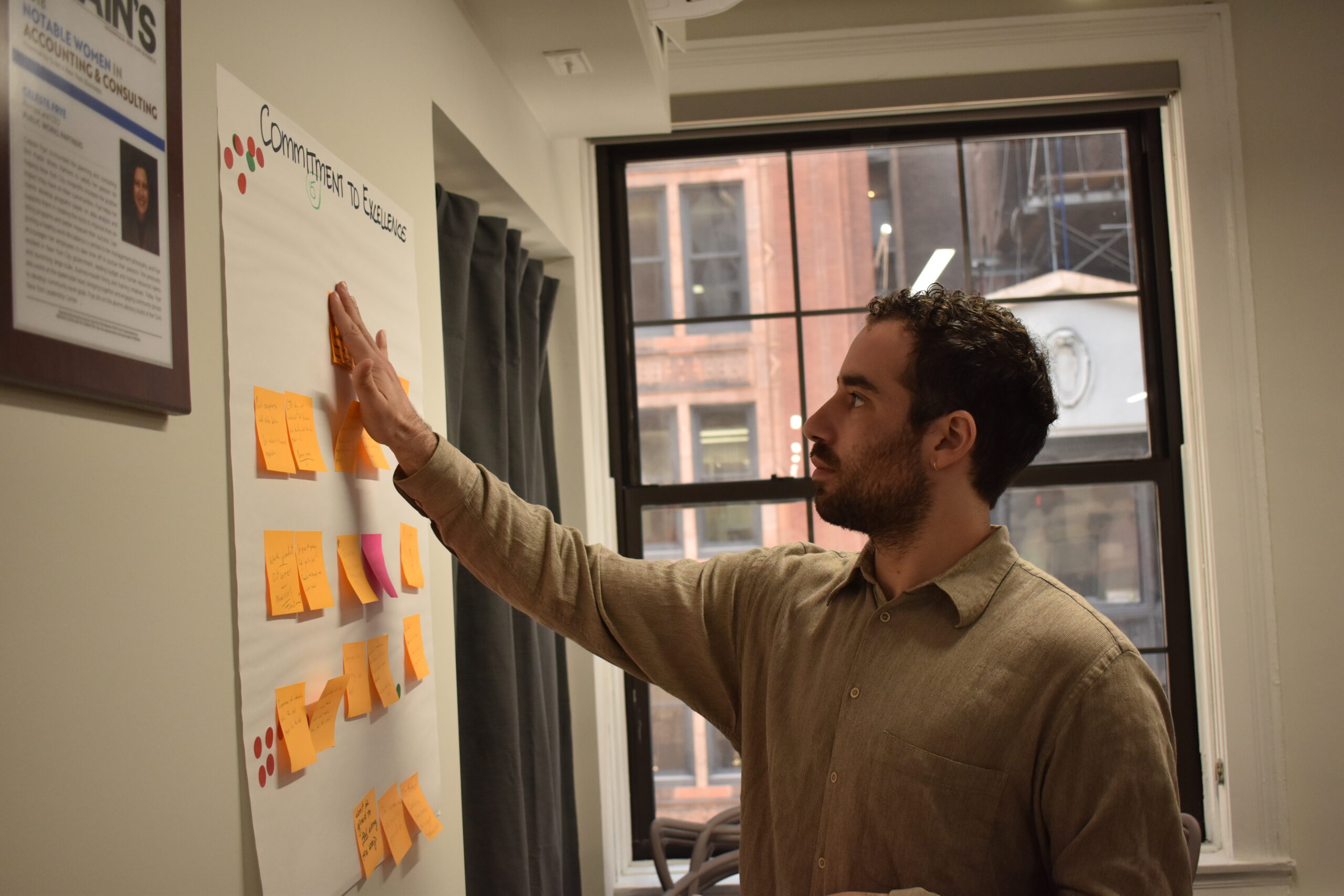Rising rent and living expenses. International crises. Domestic political drama. And the oncoming disruptive onslaught of AI. There is a lot to worry about. This is even more pronounced in the nonprofit sector where staff are working to shift systemic dynamics that are generations in the making, with limited resources, exposing themselves to potential vicarious trauma and compassion fatigue.
The best time to deal with this is now. The second best time: when planning for the future. The strategic planning process provides a prime opportunity to interweave health-building practices into the future of the organization’s operations.
Current State of Health at Work
Things are looking bleak. According to Gallup, 56% of employees are struggling, with a staggering 9% who are suffering, which means they consider their life to be miserable and have a negative view of the future. With daily negative emotions, like worry, anger, and sadness, 26% of the workforce are feeling burnout. This is leading to what the Microsoft Work Trend Index calls the turnover crisis, where 46% of the workforce are considering a job change in the upcoming year.
None of this is new, but it has been exacerbated by the pandemic. Building on a longer-term trend, it appears that rising living costs, wage stagnation, dissatisfaction at work, and a desire for more flexibility, has increased the rate of workers willingly leaving their jobs, a movement referred to as the Great Resignation, or what some are seeing more as a the Great Reshuffle. And things are worse for nonprofits with higher burnout risk, limited pay, and emotionally-heavy practices areas. According to a January 2024 survey, nonprofit staff fall in the lower 50% of engagement when compared to other industries.
For those wondering why this matters (besides plain old human compassion) staff who are struggling result in additional tangible and intangible costs for the organization. They are more likely to miss work due to poor health and are three times more likely to file a workers’ compensation claim. They are also more likely to leave, which comes with overhead costs with recruiting and training, lost productivity and opportunity costs.
On the flip side, organizations that find the right balance typically perform better. According to Gallup, organizations that care about the well-being of their staff outperform on a number of metrics, including customer engagement, profitability and productivity, turnover, and safety incidents. Those employees are 69% less likely to actively search for a new job and 3x more likely to be engaged at work.
So, what can you do? Thankfully, many organizations have accepted the premise that overall well-being is good for business. This is most evident in the proliferation of employee wellbeing programs that offer employer assistance plans (EAPs), wellness programs, and expanding mental health benefits. According to HR Executive, the total budget for wellbeing programs increased by 22% from 2020 to 2021. Beyond wellbeing initiatives, organizations are also exploring ways to improve work-life balance with flexible work arrangements, more paid time off, and even shorter work weeks. Some promising practices we’ve seen in the field are leaders moving to a more strength-based approach to employee engagement and experience, more openly discussing boundaries, and developing coaching skills within management.
All of these are great practices and can be built on by ensuring some time is focused on employee well-being during the strategic planning process.
Leveraging the strategic planning process
Strategic planning is the practice of outlining and committing to a mission-driven roadmap usually for the next 3 to 5 years. Strategic plans usually consist of an analysis of the current organizational environment, identification of clear goals for the coming period, strategies to achieve those goals, and, in some cases, a detailed plan for implementation.
The practice of putting together a strategic plan provides organizations with the opportunity to recommit to a mission and align on priorities. Often, the priorities are centered on more impactful service offerings for clients, more streamlined operations, and increasing capacity and scale. In all of those cases, staff and their wellbeing are a critical lever in reaching those goals. To reiterate the arguments above, increasing employee well-being results in positive returns on investment with reduced health costs, increased productivity, reduced absenteeism, improved employee morale, and employee retention. All contribute to higher quality services, improvements to the bottom line, and a vibrant organizational culture that can lend to deeper and broader impact.
Therefore, during the strategic planning process, organizations have the opportunity to double down on investments in staff wellbeing by developing robust employee wellbeing programs. But there’s more that can be done. Here are a couple more things to think through when considering your strategy for the next few years:
Talent Strategy: Consider identifying what improvements the organization can make when it comes to developing and retaining talent. Most organizations do not have a comprehensive strategy to improve the employee lifecycle, ensuring a high-quality employee experience and likely higher long-term retention. As employee retention is vital to fulfilling the mission, talent strategy is something to discuss during strategic planning. This could look like mapping out development opportunities for staff, designing a system to track efforts, and developing coaching skills in management.
Revisiting how we work: A recent phenomenon, especially among younger employees, is the notion that work is not working well anymore. Once again, the COVID-19 pandemic served as an accelerator with an increase in interest in approaches like Conscious Capitalism and the redefinition of the role of a corporation. This has devolved into “quiet-quitting” where staff display significant lack of engagement protesting against the hustle culture of work. Organizations must face these headwinds and respond strategically. One approach could be deploying more smaller-scale organizational changes to work like no-meeting days and even reducing emails. Another approach is considering a larger-scale framework for approaching work differently like what’s proposed in Beloved Economies.
Whether it’s a revisit to the way an organization is approaching work or a ramping up of employee wellbeing programs, increasing wellness at work is a priority for leaders of nonprofits. Dedicating time during a strategic planning process is a wise, and profitable, move.






 Public Works Partners is a WBE/DBE-certified urban planning and consulting firm. Our expertise lies in creating innovative, equitable, and sustainable solutions to complex problems.
Public Works Partners is a WBE/DBE-certified urban planning and consulting firm. Our expertise lies in creating innovative, equitable, and sustainable solutions to complex problems.